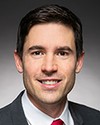Thank you, Mr. Chair.
Good afternoon, and thank you for the opportunity to be here today.
My name is Joe McBrearty. I'm the president and CEO of Canadian Nuclear Laboratories. Joining me today is Ms. Meggan Vickerd, our general manager of waste services.
My remarks today will address the committee's study on nuclear waste management practices. I am quite proud of the work that we do in this area.
To begin, I believe it is important to understand the origins of the waste we are discussing.
For over 70 years, CNL and AECL have been conducting groundbreaking research at the Chalk River laboratories. This research has contributed to two Nobel Prizes and has spurred economic and technical development at home and around the world, including the invention of the CANDU reactor, which provides nearly 60% of Ontario's electricity. In addition, medical isotopes produced in Chalk River have been used in over one billion procedures to detect and treat life-threatening diseases, including cancer.
While our history has brought immense success to Canada, it has also created nuclear waste that must be cleaned up, including contaminated soil, legacy waste management areas and old buildings. While these materials are being safely managed today, permanent solutions are absolutely necessary.
In 2015 CNL began the cleanup of the Chalk River site, including nearly 200 structures, to reduce the risk at our campus. This, and other related work, includes the repatriation of 35 tonnes of high- and low-enriched uranium assets back to the United States, their country of origin; their reuse of legacy material for exciting applications for the future; and the drastic reduction of radiological and hazardous material source terms.
Today I am very proud to say that 110 structures have now been safely remediated, work which is subject to rigorous planning to minimize material that is sent for final disposal.
Most of this material is known as “low-level radioactive waste”. CNL has proposed a near surface disposal facility as the best approach to isolate and contain these materials, to reduce risk and to protect the surrounding environment.
Intermediate-level waste will undergo processing to reduce volumes before it is safely stored for the long term at a new, modern facility until a national determination has been made on its disposition.
As for high-level waste, we plan to transport nearly all of this material off-site to the Nuclear Waste Management Organization's deep geologic repository for final disposition.
Cleaning up this waste allows us to position the campus for the future: to restore our lands to their proper state; to improve accessibility to the site; and to ensure the safety of the environment, our workforce and the public. We expect that all this waste will be safely addressed by the year 2070. That may sound like a long time, but this is painstaking work that follows strict regulatory requirements.
Looking to the future, CNL is advancing new clean energy technologies, including small modular reactors and hydrogen, and pursuing another life-saving isotope, known as “actinium-225”. This is promising research for CNL and our nation, and this is enabled by our nuclear facilities and modern waste management practices.
Thank you, once again, for the opportunity to be here.
Ms. Vickerd and I would now be happy to answer any of your questions.












